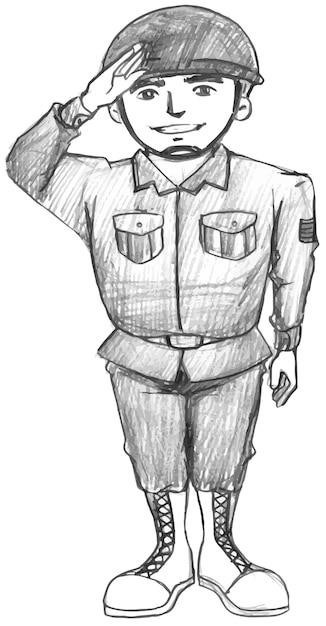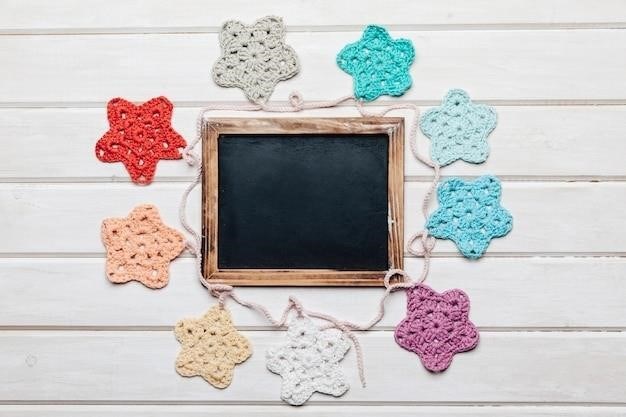Nursery Curriculum PDF⁚ A Comprehensive Guide
This guide explores various nursery curricula, offering PDFs and resources. Discover diverse approaches like Montessori, HighScope, and Creative Curriculum, tailored for preschoolers’ developmental needs. Explore sample lesson plans, activities, and subject outlines for effective early childhood education.
Finding the Right Curriculum
Selecting the ideal nursery curriculum requires careful consideration of several key factors. The child’s age and developmental stage are paramount; a curriculum designed for toddlers will differ significantly from one suited for pre-kindergarteners. Consider the learning philosophy that aligns with your values and educational goals for your child. Do you prefer a play-based approach, a more structured academic program, or a blend of both? Research different curriculum models, such as Montessori, HighScope, or Reggio Emilia, to understand their core principles and methodologies. Examine the curriculum’s alignment with national or regional standards and learning objectives. Assess the availability of resources and support materials, including teacher training and parent involvement opportunities. Review sample lesson plans and activities to gauge their engagement and suitability for your child’s interests and learning style. Don’t hesitate to consult with early childhood educators and other parents for recommendations and insights. Ultimately, the best curriculum is one that fosters your child’s holistic development, nurtures their curiosity, and encourages a love of learning.
Key Features of Effective Nursery Curricula
Effective nursery curricula prioritize play-based learning, recognizing its crucial role in holistic development. They incorporate developmentally appropriate practices, tailoring activities to the unique needs and capabilities of young children. A strong curriculum fosters creativity and imagination through art, music, dramatic play, and other engaging activities. It emphasizes social-emotional learning, helping children develop essential skills like empathy, cooperation, and self-regulation. The curriculum should promote language development through storytelling, singing, and interactive communication opportunities. It also integrates opportunities for physical activity and gross motor skill development, encouraging active play and outdoor exploration. Effective curricula provide ample opportunities for children to explore and discover through hands-on experiences and open-ended activities; They foster a sense of wonder and curiosity, encouraging children to ask questions, investigate, and problem-solve. Regular assessment methods, such as observation and documentation, are employed to monitor children’s progress and inform instructional decisions. Above all, a successful curriculum creates a nurturing and stimulating learning environment where children feel safe, respected, and empowered to learn and grow.
The Creative Curriculum for Preschool
The Creative Curriculum for Preschool, a widely used approach, emphasizes a play-based, child-centered learning environment. Its core is a comprehensive set of resources, including teacher guides, activity plans, and assessment tools, all designed to support educators in creating engaging and enriching experiences for young learners. This curriculum is built upon a strong foundation of research-based best practices, ensuring that the activities and learning experiences are developmentally appropriate and aligned with early childhood education standards. A key feature is its focus on ten areas of learning and development, encompassing physical, cognitive, social-emotional, and creative domains. The curriculum provides teachers with numerous options for daily activities, offering flexibility to adapt to individual children’s needs and interests. It integrates various learning methods, encouraging exploration, discovery, and hands-on experiences. Detailed lesson plans and activity suggestions are provided, making implementation straightforward for educators. The Creative Curriculum also incorporates ongoing assessment strategies, enabling teachers to track children’s progress and adjust their teaching accordingly. This holistic approach aims to foster a love of learning and prepare children for future academic success.
HighScope Curriculum⁚ Research-Based Approach
The HighScope Curriculum stands out for its rigorous, research-based approach to early childhood education. Developed by the HighScope Educational Research Foundation, this curriculum emphasizes active learning and child-initiated activities. It’s structured around a daily plan that includes time for adult-directed activities, child-chosen activities, and group time. A key element is the emphasis on planning and reflection. Children are encouraged to plan their activities, carry them out, and then reflect on their experiences. This process fosters critical thinking, problem-solving skills, and self-regulation. The curriculum provides a detailed framework, including specific learning objectives and assessment methods. The HighScope approach is particularly valuable for its focus on long-term developmental outcomes. Extensive research has demonstrated its effectiveness in improving children’s academic achievement, social-emotional skills, and overall well-being. The curriculum’s materials are comprehensive, offering teachers detailed guidance and support. It is designed to be adaptable to various settings and cultures, making it a versatile choice for educators worldwide. The emphasis on active learning and child-directed experiences ensures that children are engaged and motivated to learn.
Montessori Method for Preschoolers
The Montessori Method offers a unique approach to early childhood education, emphasizing self-directed activity, hands-on learning, and collaborative play. Central to this philosophy is the use of specially designed educational materials that encourage children to learn at their own pace and in their own way. The classroom environment is meticulously prepared to foster independence and exploration. Children are given the freedom to choose activities that interest them, promoting intrinsic motivation and a love of learning. The Montessori teacher acts as a guide, observing each child’s progress and providing individualized support. Key features include the use of sensorial materials to develop fine motor skills and cognitive abilities, practical life exercises to build self-sufficiency, and academic materials to introduce foundational concepts in mathematics, language, and science. The Montessori method fosters a sense of community and collaboration. Children learn to work together, share resources, and respect the learning styles of their peers. This approach is particularly well-suited for preschoolers as it nurtures their natural curiosity and desire for independence. The structured yet flexible environment allows children to develop at their own pace, building confidence and a strong foundation for future learning. Numerous studies support the effectiveness of the Montessori method in enhancing cognitive development, social-emotional skills, and academic achievement.
Cameroon Nursery School Curriculum⁚ Objectives and Aims
The Cameroon nursery school curriculum is designed to holistically develop each child across all domains⁚ psychomotor, social-emotional, and cognitive. A primary objective is to prepare children for the transition to primary school, equipping them with fundamental skills and knowledge. The curriculum fosters a supportive environment that encourages exploration, creativity, and self-discovery. Socialization is a key element, with an emphasis on collaboration, cooperation, and respect for others. The curriculum aims to nurture a child’s natural curiosity and develop their problem-solving abilities. It focuses on building a strong foundation in language development, numeracy, and literacy. Practical life skills are also integrated to promote independence and self-reliance. The curriculum is adaptable to the diverse needs and learning styles of individual children. Assessment methods are varied, utilizing observations, informal assessments, and portfolio work to monitor progress. The overall aim is to create a nurturing and stimulating learning environment where children feel safe, supported, and empowered to reach their full potential. The curriculum is continually reviewed and updated to ensure alignment with national standards and best practices in early childhood education. Resources and materials are carefully selected to engage children and enhance their learning experience.
CDA Preschool Center Based Sample Curriculum
The CDA Preschool Center Based Sample Curriculum offers a structured framework for achieving the 120 hours of formal education required for CDA credentialing. This comprehensive curriculum provides a pre-organized collection of lesson plans, eliminating the need for individual lesson development. It’s designed to meet the diverse needs of preschool children, encompassing various learning styles and developmental stages. The curriculum includes a range of engaging activities, catering to different interests and abilities. It integrates various teaching methodologies to foster a dynamic and interactive learning environment. The curriculum promotes creativity, critical thinking, and problem-solving skills. It emphasizes social-emotional development, encouraging cooperation and positive relationships among children. The curriculum is aligned with early childhood education best practices and national standards. It provides a flexible structure, allowing for adaptation based on the specific needs of the children and the resources available. Regular assessments are integrated to monitor progress and inform instructional decisions. The curriculum offers a valuable resource for both experienced and new preschool educators aiming for CDA certification. It provides a solid foundation for creating a stimulating and effective preschool program.
Curriculum Examples and Resources
Numerous online resources provide diverse curriculum examples and materials for preschool education. These resources often include downloadable PDFs containing lesson plans, activity sheets, and assessment tools. Websites dedicated to early childhood education offer a wealth of free and paid resources, catering to various educational philosophies and approaches. Many platforms showcase sample curricula aligned with national standards and best practices, providing educators with adaptable models for their classrooms. These resources often include detailed descriptions of learning objectives, age-appropriate activities, and suggested materials. Some resources offer themed units focusing on specific topics like science, art, or literacy, providing structured learning experiences. Others offer a more flexible approach, encouraging educators to adapt the materials to suit their students’ individual needs and interests. These examples and resources often include visual aids, such as printable flashcards or activity charts, making them engaging and accessible for both educators and young learners. The availability of such resources empowers educators to build comprehensive and stimulating preschool programs.
Activities and Lesson Plans for Toddlers
Developing age-appropriate activities and lesson plans for toddlers requires careful consideration of their developmental stage. Toddlers thrive on hands-on experiences that engage their senses and promote exploration. Effective lesson plans incorporate various learning styles, including visual, auditory, and kinesthetic activities. Simple, repetitive activities are ideal for reinforcing basic concepts. For example, singing nursery rhymes helps develop language skills, while playing with blocks builds fine motor skills and spatial reasoning. Art activities such as finger painting or playdough encourage creativity and self-expression. Outdoor play is crucial for physical development and provides opportunities for exploration and social interaction. Storytelling and interactive reading sessions foster language development and imagination. Structured activities should be balanced with unstructured playtime, allowing toddlers to engage in self-directed exploration and discovery. Lesson plans should be flexible and adaptable to the toddlers’ interests and learning pace. Remember to prioritize safety and supervision during all activities, ensuring a supportive and stimulating learning environment.
Subjects Studied in Nursery Schools
Nursery school curricula vary, but common subjects focus on holistic development. Language development is paramount, encompassing listening, speaking, reading readiness, and basic writing skills. Mathematics introduces fundamental concepts like counting, shapes, and sizes through playful activities. Creative expression is fostered through art, music, and dramatic play, encouraging self-expression and imagination. Social-emotional learning is crucial, teaching children cooperation, empathy, and self-regulation. Physical development is addressed through gross motor skills (running, jumping) and fine motor skills (drawing, writing). Science is explored through observation, exploration, and simple experiments, igniting curiosity about the natural world. Social studies introduces basic concepts of community, families, and different cultures. Daily routines, such as circle time, story time, and free play, weave learning into the fabric of the day. The overall goal is to lay a strong foundation for future academic success and build a love of learning. Specific subject emphases may differ based on the school’s philosophy and the children’s ages.
Choosing the Best Curriculum for Your Child
Selecting the ideal nursery curriculum requires careful consideration of your child’s individual needs and learning style. Observe your child’s interests and strengths to identify a curriculum that aligns with their natural inclinations. Research different pedagogical approaches – Montessori, HighScope, Reggio Emilia, or others – to understand their philosophies and teaching methods. Consider the curriculum’s emphasis on play-based learning, hands-on activities, and social-emotional development. Visit potential schools to observe classroom environments and interact with teachers. Assess the curriculum’s alignment with your values and expectations for your child’s education. Examine the curriculum’s structure, resources, and assessment methods to ensure they meet your child’s developmental stage and learning goals. Don’t hesitate to ask questions and seek clarification from educators about their teaching methods and how they adapt the curriculum to individual needs. The best curriculum is one that nurtures your child’s unique talents while fostering a love of learning in a supportive and engaging environment. Remember to prioritize a strong teacher-student relationship.



